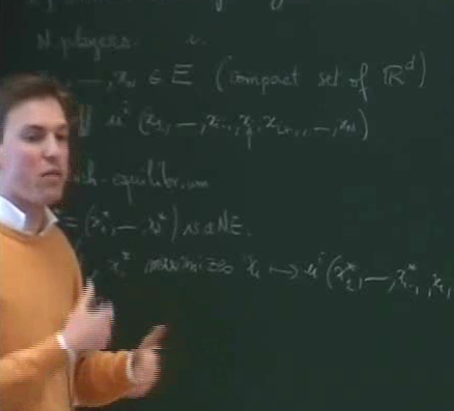 23/01/2014, 15:00 — 16:00 — Room P3.10, Mathematics Building
23/01/2014, 15:00 — 16:00 — Room P3.10, Mathematics Building
K. R. Rajagopal, Texas A&M University
The mechanics and mathematics of bodies described by implicit constitutive equations
After discussing the need for implicit constitutive relations to describe the response of both non-linear fluids and solids, I will discuss applications wherein they can be gainfully exploited. It will be shown that such implicit relations can explain phenomena that have hitherto defied adequate explanation such as fracture and the movement of cracks in solids, and such models have the potential to describe the response of fluids with properties that depend both on the invariants of the stress and appropriate kinematical variables. The models also provide a new way to look at turbulence in fluids. Implicit models also provide a framework for describing important problems concerning the flow of non-linear fluids through porous media due to high pressure gradients. Moreover, such implicit constitutive relations lead to governing equations that possess characteristics which are desirable both from the point of view of qualitative mathematical and numerical analysis.
27/03/2012, 14:00 — 15:00 — Conference Room, Instituto de Sistemas e Robótica, North Tower, 7th floor, IST
Bernold Fiedler, Free University Berlin
Determining nodes for regulatory networks
We consider systems of differential equations which model complex
regulatory networks by a graph structure of dependencies. We show
that the concepts of informative nodes (Mochizuki) and determining
nodes (Foias, Temam) coincide with the notion of feedback vertex
sets from graph theory. As a result we can determine the long-time
dynamics of the entire network from observations on the feedback
vertex set, only. We present biological examples of gene-regulatory
and signal transduction networks where the required observation set
is much smaller than the entire regulatory network. Since the
mathematical scope of our approach is much broader, however, we
actively seek discussion of regulatory and control aspects in other
networks, for example in electrical engineering, multi-agent
coupling, neural networks, and the like.
 11/01/2012, 14:00 — 15:00 — Room P3.10, Mathematics Building
11/01/2012, 14:00 — 15:00 — Room P3.10, Mathematics Building
Olivier Guéant, Université Paris-Diderot
Games with infinitely many players: the mean field games approach
The PDEs corresponding to mean field games are two strongly coupled PDEs: one (backward) Hamilton-Jacobi-Bellman equation and one (forward) transport equation. We will present these equations and prove a very general criterion for uniqueness. Existence will be discussed but only proved in the case of quadratic hamiltonians for which many results are known and will be proved (constructive schemes, comparison principle,...).
See also
https://www.math.tecnico.ulisboa.pt/galg/LARSyS-II/slides.pdf
Two 1h sessions with coffee break in the middle: 14:00 - 16:15
08/11/2011, 14:00 — 15:00 — Room V0.15, Civil Engineering Building, IST
José Fernando Mendes, Universidade de Aveiro
LS1 - Complex Networks: an Introduction
In this short course I will present some of the most relevant results of the theory of random graphs. Then some of the recent developments in this field will also be presented, namely results of complex networks following a power-law (scale-free) structure and the respective mechanisms associated (concept of preferential attachment), as well as other important properties. I will also consider concepts of percolation and resilience of networks and some of the most recent results on complex networks associated with bootstrap percolation, -cores, et cetera.
![Mathematics @ Instituto Superior Técnico [Logo] Mathematics @ Instituto Superior Técnico](/img/DM_Ersatz.svg)


